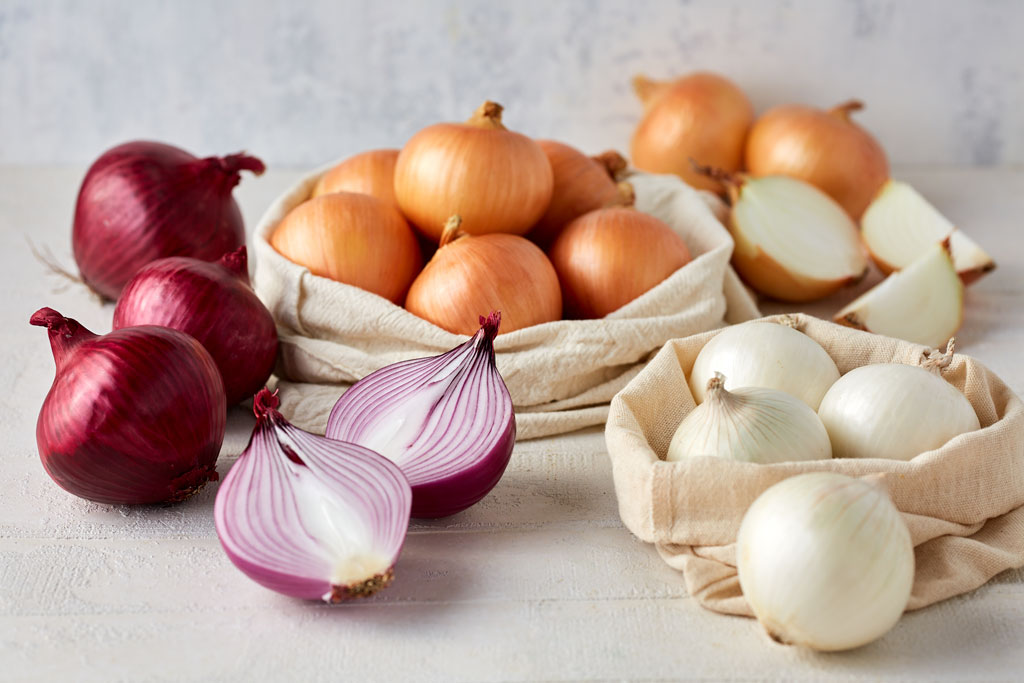In the treatment of chronic diseases, the potential effects of vegetables and their phytochemicals have been studied extensively for many years.
Onions are a source of various biologically active phytochemicals such as phenolic acids, thiosulfinates, and flavonoids including quercetin and kaempferol.
A number of in vivo and in vitro studies have evaluated the possible effects of onions and their components on chronic diseases. Some of the more interesting studies include:
Obesity
One randomised, double-blind, placebo-controlled study with overweight and obese individuals, found onion peel extract (containing 50mg of quercetin, 65mg of total flavonoids and 119.2mg of total polyphenol per capsule) prevented fat accumulation in various body parts and had beneficial effects on obesity.
Diabetes
An experimental study using kaempferol, one of the important beneficial components in onions, showed blood glucose levels decreased in diabetic rats.
Cardiovascular disease
Onion juice extracted from fresh onion has shown a hypolipidemic effect on rats, with decreases in plasma total cholesterol, triglyceride and low-density lipoprotein cholesterol levels.
Cancer
Quercetin, an important flavonoid in onion, acts as a chemoprotective agent in cancer due to its effects on signal transduction in angiogenesis and cell proliferation. Other onion phytochemicals (quercetin and its glycosides, flavonoids, polyphenols, organosulfur compounds, anthocyanins, ferulic and gallic acids) also have potential anti-cancer effects such as inhibiting mutagens, carcinogens, free radicals and apoptosis.
Practice Tips
- Onions contain more than 25 phytonutrient compounds, including quercetin and sulfoxides, plus anthocyanins in red onions
- Onions are one of the top common food sources of polyphenol antioxidants, specifically the antioxidant called quercetin
- Eating half an onion (75g) each day can help reap the many health and nutrition benefits of onions
Reference
Karavelioğlu, Burçin and Mustafa Hoca. Potential effects of onion (Allium cepa L.) and its phytomolecules on non-communicable chronic diseases: a review. The Journal of Horticultural Science and Biotechnology 97 (2021): 24-33. DOI:10.1080/14620316.2021.1952904.

